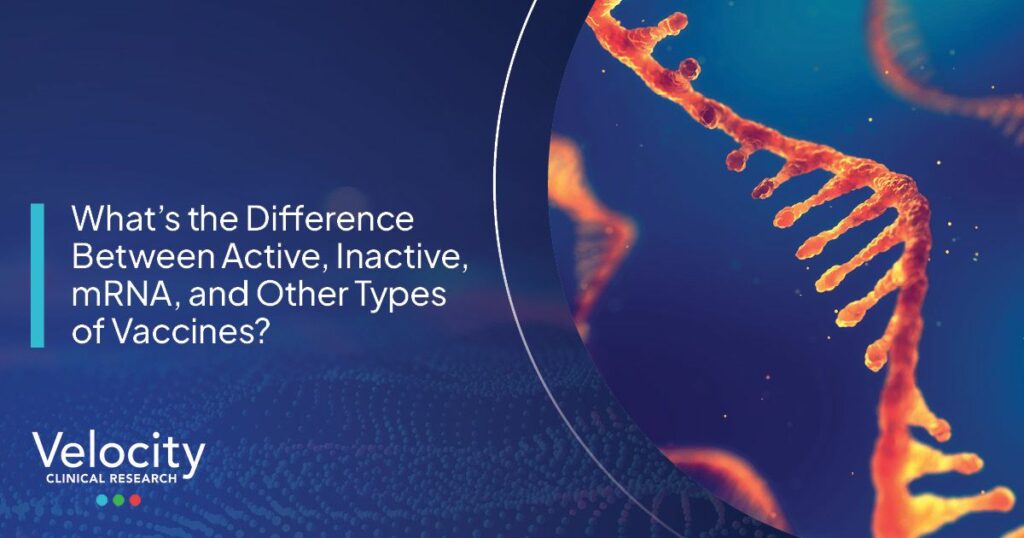Our clinical staff is often asked by participants whether or not vaccines can cause the infections they’re supposed to prevent. Or, put another way, “Is this a live vaccine?” This has been especially true for our COVID-19, influenza, anthrax, and Zika virus studies.
The answer is almost always no; vaccines generally cannot cause the illnesses they’re intended to prevent.
Vaccines work by exposing you to a small and safe amount of weakened, dead, inactive, or biosynthetic bacteria or viruses. This prompts your immune system to recognize the pathogen and/or defend you from certain diseases.
Sometimes — as in the case of flu vaccines — this can cause mild symptoms, such as a slight fever, soreness around the injection site, and fatigue. In all cases, these minor symptoms are a far better alternative than infection. Mild symptoms can be a sign that your immune system is doing its job effectively.
Below we’ll review different types of vaccines and how they work.
Live-attenuated vaccines
Live vaccines feature a weakened (or attenuated) form of an infectious agent. ‘Live’ in the term ‘live vaccine’ is a bit of a misnomer. Though viruses play an important role in the tapestry of life, scientists generally do not consider viruses to be alive. Here’s why:
- Viruses multiply, but they must use host cells to do so.
- Viruses contain nucleic acid (RNA or DNA), but not cells.
- Viruses mutate and replicate, but they don’t grow.
Examples of active/live vaccines: Measles/mumps/rubella (MMR); chickenpox; shingles, smallpox.
Inactive or dead vaccines
Inactive, dead, or inert vaccines feature pathogens that cannot multiply, and cannot cause the diseases they’re intended to fight. However, your immune system is still able to recognize and attack these inactive pathogens to build immunity.
Examples of inactive/dead vaccines: Flu (shot), polio, rabies, whooping cough (pertussis)
Conjugate or subunit vaccines
These biosynthetic vaccines only contain fragments of the pathogen. This helps the immune system develop a response to a specific piece of a pathogen.
Examples of conjugate and subunit vaccines: Human papillomavirus (HPV), pneumococcal disease, meningococcal disease
DNA and mRNA vaccines
Our clinical staff is often asked how mRNA vaccines work. DNA and mRNA vaccines are intended to give our cells genetic instructions to create inert pieces of viruses. Our immune system can then recognize and target these pieces to build immunity.
Examples of mRNA vaccines: COVID-19, and many more, like influenza and RSV, are currently being studied in clinical trials.
Viral vector vaccines
These vaccines use harmless viruses to deliver genetic instructions (DNA) to cells and prompt an immune response.
Examples of viral vector vaccines: Hepatitis B, Ebola
Toxoids
Though uncommon, these vaccines help your immune system fight the effects of toxins — not the actual infection.
Examples of toxoid vaccines: Tetanus, diphtheria

